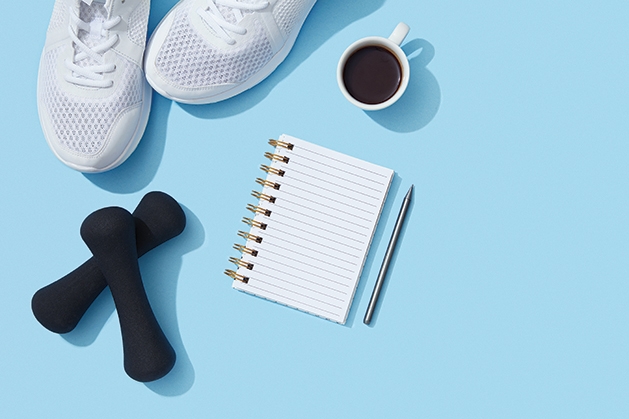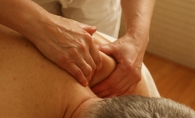
Establishing or renewing fitness goals is characteristic of our collective optimism when entering a new year. Clean slates and fresh starts are often exactly what’s needed to inspire movement toward improved health and wellness. But, unlike past years, many may be wondering how exactly to go about achieving fitness goals while still navigating our “new normal.” So, we interviewed local experts about innovative ways you can get plugged in and fired up about getting fit.
It’s been nearly a year since the novel coronavirus caused local gyms to temporarily shutter. During the early months of 2020, when Minnesotans were under a shelter in place order, local YMCAs pivoted toward offering childcare for essential workers, becoming the largest childcare provider in the state. But, YMCA staffers never stopped providing wellness information and fitness initiatives for the broader community. Virtual fitness has been, and continues to be, available through live and on-demand programming like Y-At-Home, YMCA 360, YouTube and Facebook Live. The YMCA 360 app includes hundreds of workouts, dance classes, boxing instruction and yoga. Families can participate together, and distance learning students can even obtain physical education credit. The Y’s Facebook Live programming is saved on its Facebook page where viewers can find hundreds of free fitness options and lots of virtual support.
Before re-opening last summer, Orangetheory in Edina installed an electrostatic air cleaning system that neutralizes over 99 percent of the SARS-CoV-2 pathogen. Members were screened before entering the studio. Once inside, members have the added assurance of the ionization air filtration and between each class there is 15 minutes of cleaning and disinfecting of equipment. Edina Orangetheory owner and operator Mike Calawerts says, “When you first walk in, it might seem a bit like a hospital, but we try to turn the party on once you’re in your spot,” referring to exercise equipment stations placed a minimum of seven feet apart and following all state health protocols for capacity.
Orangetheory’s main cardio elements include treadmills and rowing machines. They also have TRX trainers and full free weight stations for each participant. “All [workouts] are designed and tested to deliver results,” says Calawerts. The atmosphere is also “unique in that a class can have a dad whose last kid just went to college and who hasn’t had much time for himself and also include weekend marathoners. Ability and age are varied in every class. The minimum age for participants at Orangetheory is 14 and I’ve had members up to age 80. We even had a mom and daughter spend time together working out. We’re seeing more teens than before (likely due to distance learning) and it’s nice to see moms and dads not leave the kids at home,” but to pursue fitness as a family.
For those who prefer an Orangetheory experience at home, the company’s corporate offices have created fitness at home workouts for users of its smartphone app. Calawerts says the app comes with a built in heartrate monitor to track your minutes in the “orange zone” while working out at home.
Senior director of communications and marketing Joan Schimml says the Y’s virtual offerings are not just for exercise but also include resources for things like meditation and overall well-being. “People can even access our YouTube videos for cooking demonstrations from a teaching kitchen and learn things like how to make a healthy smoothie,” says Schimml.
Schimml says, “People have been making [fitness related] decisions based on safety, but we want to ensure that people also focus on finding time to take care of themselves.” Thus, the many virtual options will remain a prominent resource so people can still do all the things they’ve always enjoyed at home if that’s more comfortable.
Schimml says they were unsure what members over age 60 might do once gyms reopened but they have been coming. A concentrated effort on its Foreverwell population (dedicated to members ages 55+) has included daily Zoom groups and classes for support, and provides social, education and movement opportunities. “What people are asking for now is social and emotional support,” says Schimml noting the importance of mental health and well-being. The Y’s efforts in that regard has included 137,000 wellness checks for senior Foreverwell members, connecting some to local resources in an age when navigating so many things online can be challenging.
Edina Orangetheory Fitness co-owner Wendy Walker also emphasizes the importance of working out to enhance the immune system, noting that top health officials encourage regular exercise to lower risk of illness and reduce overall inflammation. The British Journal of Sports Medicine found that those who did aerobic exercise five or more days per week had a lower number of upper respiratory tract infections (like the common cold) over a 12-week period.
Fitness should be a part of everybody’s everyday life and Schimml notes that financial assistance is available for much of the YMCA’s offerings so that even when budgets are tight, everyone has access to fitness and mental health resources.
At home exercise ideas:
- Walks are always a good idea.
- Get outside if you can.
- Never underestimate the value of stretching and yoga.
Practice functional fitness:
- Go from standing to sitting often or go from sitting on the floor to standing for more of a challenge.
- Look as far as you can over both shoulders.
- Take off your shoes to wiggle and stretch your toes.
Tips for staying motivated to exercise at home:
- Lay out your workout clothes the night before.
- Have a dedicated space to workout.
- Essential oils, candles or music can help get you in the mood.
Once restrictions lift, how to venture back into the gym:
Go and check it out without necessarily taking a class or working out. Have your gym bag ready, but there’s no need to commit. First, see if you feel comfortable in the space. Is there clear safety related signage? Is the equipment adequately spaced? Can the staff answer your questions and help you feel at ease? Once you commit, don’t talk yourself out of it. It’s 2021 and everything is going to be better, including your commitment to yourself and your health.
Shifting part of your fitness budget toward more at home workouts in the new year? We asked Orangetheory owner/operator Mike Calawerts and the YMCA’s senior director of health and well-being Jennifer Menk to provide their expertise on specific types of popular exercise equipment.
Rowing Machine
These provide a great total body workout if you add some load resistance. You can build core strength and it’s low impact. The trick for the average person is endurance. [Rowing] is difficult for longer than 10-15 minute bursts. It can also get boring and repetitive. That said, [rowing] can provide an opportunity to engage mentally if you can envision being out on a lake and be inspired to be in the moment. It’s important to note that the practice of mindfulness is not just for yoga.
The number one determiner of which piece of exercise equipment to purchase should be which will you use more? User behaviors show time and again, that compliance is lower at home. That said, rowing, when a correct form is used, 75-85 percent of musculature is engaged and rowing ranks in the top three for total calorie burn right behind cross country skiing and swimming. But not everyone likes it. Choosing what you like is important. And those who don’t want to do high amounts of cardio may gravitate to a rower because results require less time commitment. Just remember, on a treadmill, you kind of already know how to walk, jog or run. On a rower, you may want to pay for a Zoom coach to teach you how to row correctly.
Peloton
These are interesting because when you add loaded resistance, [like how it’s done in the Y’s group cycle classes] you can develop a muscular workout with a heavier load. But compliance at home to add that load is less likely without encouragement from an instructor you really like and who meets your style. If you enjoy the experience, you’re more likely to stick with it. Plenty of people have sold their Peloton because they don’t use it regularly. Also, cycling doesn’t help with flexibility, so an added virtual stretching course would be ideal.
These offer consumers a big list of things that they want and can do at their leisure at any time and by picking their coach. But do you see yourself biking consistently 3-5 times a week throughout the year? This may be a great option in colder months but is it sustainable? Plenty of these and other fitness equipment could end up for sale in the aftermarket once all COVID restrictions are lifted. So, choose wisely.
Treadmill
These are generally used for cardiovascular health. A heavy incline or speed circuits could provide additional benefits, but [treadmills] do not do much for strength and flexibility. Maybe if you incorporated a virtual stretch or yoga flow class afterward, you’d get a more well-rounded workout regimen.
It’s important to determine your heartrate zone and work off that to determine maximum fat burning … a general rule of thumb is 180 minutes of moderate activity each week with 75-90 minutes of high intensity training sprinkled in. If you’re able to get yourself into anaerobic states, you will burn more calories post workout. That’s why tracking is important. But just to be healthy, 20 minutes per day is recommended. And try to choose quality equipment. Lower priced treadmills can be tough on your body. Better technology, like what you find in health clubs, are typically less impactful than standard at-home equipment.
Elliptical
Menk likes this home workout equipment option best since it’s done while standing. She says, “We sit too much. And biking has us leaning over much like we do in the car or at our desks. This is a good option for improving posture and can be challenging but is still easy on the joints and it also provides some variety.”









